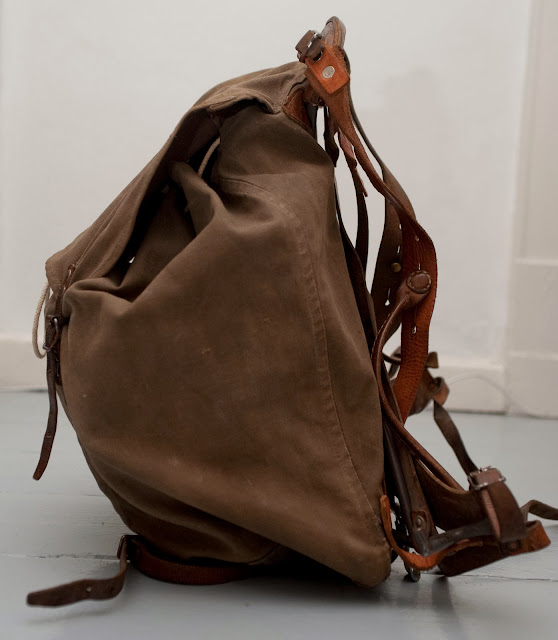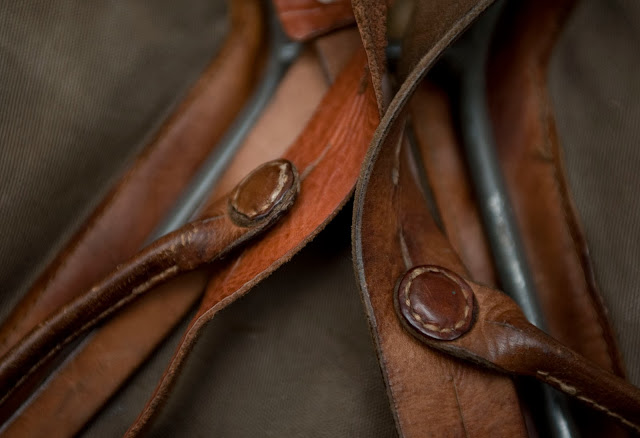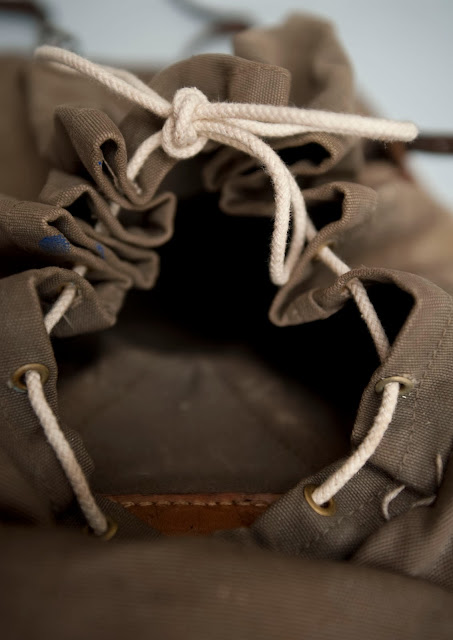Restoring a Vintage Swedish Army Rucksack...
... Or at least pepping it up a bit. |
| Not a stitch of technical fabric in sight. |
It's clear that Fjallraven have taken as their inspiration the original Swedish and British Army commando rucksacks from WW2.
So I set about finding one. This example was £20. According to the seller the pack is post war. Metal framed and made from thick field grey canvas and heavy leather, 60 odd years on the rucksack was still in pretty good condition.
A few minor repairs have been done on the canvas and the leather was a little tired, but that's it.
The stitching was all in good condition, with no repairs needing doing.
I set about washing the canvas first. I scrubbed the lot with a hard brush in warm water. No soap. This supposedly expands the canvas fibres, and as they re dry they become even tighter - hence more water resistant.
As this was drying I turned to the leather, applying a liberal coat of Leder Gris leather grease to all of the harness and straps. Leder Gris is made of entirely natural ingredients, with none of the degrading chemicals you find in normal polishes like Kiwi. This helped to moisten the quite dry leather fixings after what presumably had been long years of storage.
 |
| Despite years in storage the dry leather responded wonderfully to a working over with some leather grease. |
The second argues that a coat of wax will obviously increase the waterproofing - more important on something designed to spend its working life outdoors.
There was a district whiff of paraffin prior to the wash, so the pack had clearly been waxed previously.
You can try making your own with a mix of bees wax and paraffin, but I had some Fjallraven Greenland wax to hand anyway.
I applied a thin layer all over, but paid particular attention to the seams, bottom and lid - all points that get the most wear / exposure.
You simply warm the wax and rub it in to the canvas as evenly as possible. Once that's done the wax needs drying - I stole the wife's hairdryer and just worked over the pack panel by panel.
It should be good for quite a few Danish winter downpours now.
However you choose to treat your pack, if you're going to be out in inclement weather you'd use a dry bag inside the pack anyway.
When the pack next needs waterproofing, I might try making my own wax and applying it melted with a brush - this is supposed to give a much more even finish.
 |
| Tool attachment loops. Not that I have an ice axe, but if I did these would be most useful. |
 |
| A simple top loading pack with heavy duty draw string closure. |
With minimal expense, time and effort you can easily bring one of these bags back to life. Why waste money on modern branded examples?
 |
| Bed roll or sleeping mat straps . |




I actually used one of these at Boot camp when I did my national service. They're quite comfortable, as long as you take care when adjusting the straps. But they're not the thing for heavy load, since the load is on your back and not resting on your hip.
ReplyDeleteDid you guys wear webbing too? I guess it's a similar to our PLCE - worn with webbing the bottom of the bergan rests on it, transferring some of the weight on to your hips.
ReplyDeleteGood point. Yes, we were issued with US Army WW2 style webbing. I just didn't figure out the trick of using it as a rest for the backpack. No icepick, but we did get a (ww2-era) entrenching tool (AKA: "a spade"). Guess the navy boot camp wasn't very high on the priority list for new equipment!
ReplyDelete